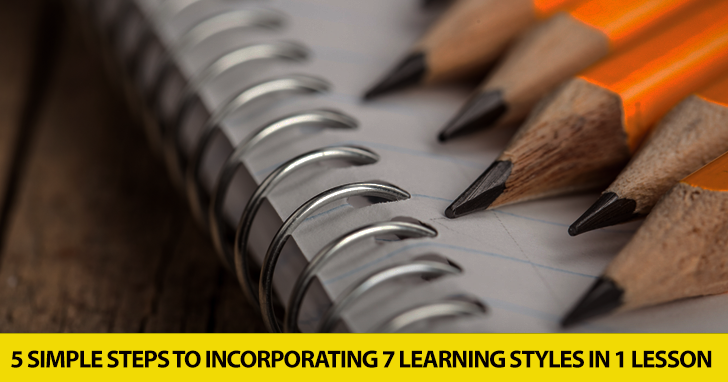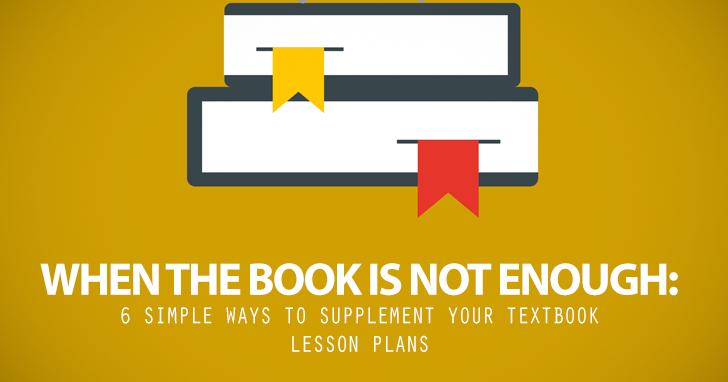Seven in One Blow: 5 Simple Steps to Incorporating 7 Learning Styles in One Lesson


When you can follow along in the book and just do the exercises the curriculum’s author set forth? When you don’t have to supplement at all? Yeah, it’s never happened to me either. Even the best curriculums and lesson plans need supplementing. Don’t you wish you had a tool that could make this easier? That could show you just what you need to add and how? Well, here you have it. No matter what you have or don’t have in your curriculum, here is a step by step process to figure out what you need and how to supplement what you have.
As you might expect, the first step is to read the curriculum. You have to know what you have before you know what you need. As you read, you’ll have to have your goals in mind, what you want your students to learn. While you are reading, ask yourself these questions:
Once you ask yourself these questions, you will have a good idea of where you need to supplement. Make notes of any area that isn’t covered in the given curriculum, or if it’s easier make yourself a check list with your goals, the different areas of language instruction, and the different learning styles. Check each one off the list as you read through the curriculum and what you have left on the list are the types of activities you need to supplement.
This step is so easy to write down, but the actual doing of it can take some time. Depending on what you have on your missing items list, you may only need a few supplemental activities or you may need a lot of them. Here are some ideas for activities you can do in each of the language skills areas.
Reading – If you don’t have reading covered in your curriculum, consider adding an activity like the following. Read a newspaper article or short story and answer questions on the material. Do research online. Have students look up answers to questions in books you have in your classroom.
Writing – If you need to add a writing exercise, try the following. Have students write a summary of something they read or heard. Have them write a letter to someone associated with what you are studying. Have them support their opinion in writing or write an essay that discussed the topic. Have them write an email or memo.
Listening – Do your students need more listening practice than is included in the curriculum? Show a video, movie, news clip, or play a song. Challenge students to listen for specific words, information, or to use the information they hear in a response.
Speaking – There are tons of ways to get your students talking, but here are some easy ideas. Have students discuss the topic, have them practice a dialogue, play a game, talk about a picture, or plan an event. Let them interview each other or, even better, native speakers to cover listening and speaking at once.
Vocabulary – For any new words students encounter in their reading or listening materials, have them look up words in the dictionary, determine meaning from context, match words to synonyms or antonyms, or break words down into roots and affixes and learn the meanings of those.
Grammar – If you need additional grammar practice for your students, give them worksheets, exercises in the book, have them make corrections to something you write, or have them edit a classmate’s composition. You can also take time in the computer lab to do exercises online or play a grammar game on any of many ESL websites.
You’ve read through the curriculum. Is there something to look at? Listen to? Touch and manipulate? Do students have a chance to talk to each other? Do they have a chance to work on their own? Is there music involved in the lesson? Hopefully your curriculum connects with several different learning styles. If not, supplement with one of these ideas.
Only you can know what your students are capable. Make your activities a little harder or a little easier. Add steps to the process or take some away. Or if you are lucky, leave them just where they are.
Practical language use is realistic language use. Make sure you have a connection to real life language use in at least one of your planned activities. If not, add one or more. Have students read something written for native speakers. Have them talk to strangers on the street. Or maybe have them write a letter or make a phone call.
Don’t expect your students to jump right in to the deep end when it comes to what you want to teach. Plan one or two activities to warm them up. Do a review, play a game, do an ice breaker, give students a problem to solve, or plan a discussion on today’s topic.
While you are at it, make sure you have a couple of fillers in your back pocket for those times when your lesson doesn’t take as long as you anticipated or it takes too long to go on to the next thing in today’s class. Busy Teacher has tons of resources for warmers and fillers.
Six steps and you are ready to go confident that your students are learning everything you intend them to learn and that every student will connect with the material in meaningful ways. You are ready to conquer the world, well at least teach this week’s lesson.